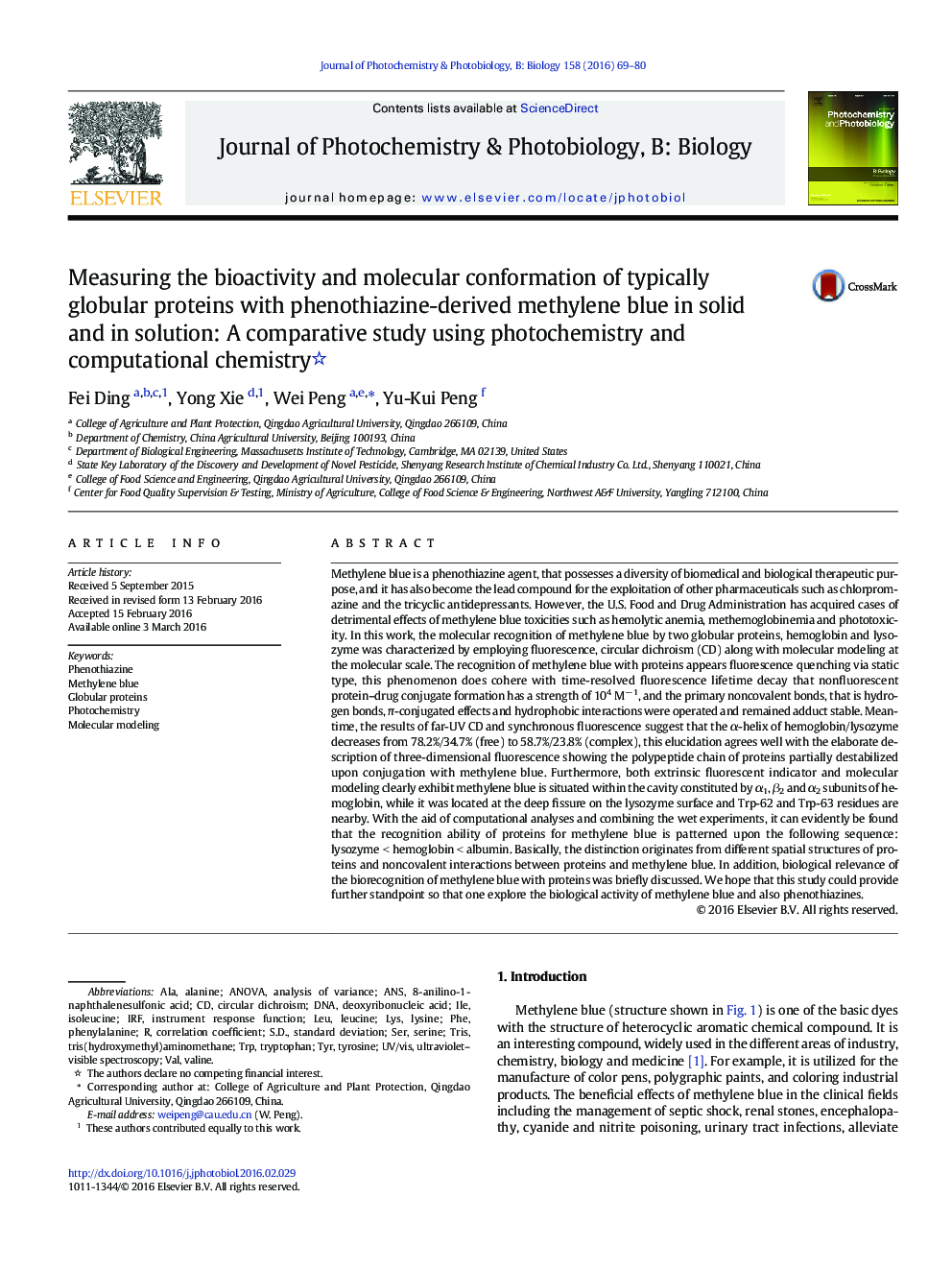| کد مقاله | کد نشریه | سال انتشار | مقاله انگلیسی | نسخه تمام متن |
|---|---|---|---|---|
| 29882 | 44445 | 2016 | 12 صفحه PDF | دانلود رایگان |
• The bioactivities of biopolymers are related closely to three-dimensional structures.
• The molecular conformations of biomacromolecules were perturbed by phenothiazine-derived agent.
• Photochemical properties of tryptophan residues would largely be affected by methylene blue.
• Pharmacological activities of phenothiazine-derived drugs should notably be interfered with globular proteins.
Methylene blue is a phenothiazine agent, that possesses a diversity of biomedical and biological therapeutic purpose, and it has also become the lead compound for the exploitation of other pharmaceuticals such as chlorpromazine and the tricyclic antidepressants. However, the U.S. Food and Drug Administration has acquired cases of detrimental effects of methylene blue toxicities such as hemolytic anemia, methemoglobinemia and phototoxicity. In this work, the molecular recognition of methylene blue by two globular proteins, hemoglobin and lysozyme was characterized by employing fluorescence, circular dichroism (CD) along with molecular modeling at the molecular scale. The recognition of methylene blue with proteins appears fluorescence quenching via static type, this phenomenon does cohere with time-resolved fluorescence lifetime decay that nonfluorescent protein–drug conjugate formation has a strength of 104 M− 1, and the primary noncovalent bonds, that is hydrogen bonds, π-conjugated effects and hydrophobic interactions were operated and remained adduct stable. Meantime, the results of far-UV CD and synchronous fluorescence suggest that the α-helix of hemoglobin/lysozyme decreases from 78.2%/34.7% (free) to 58.7%/23.8% (complex), this elucidation agrees well with the elaborate description of three-dimensional fluorescence showing the polypeptide chain of proteins partially destabilized upon conjugation with methylene blue. Furthermore, both extrinsic fluorescent indicator and molecular modeling clearly exhibit methylene blue is situated within the cavity constituted by α1, β2 and α2 subunits of hemoglobin, while it was located at the deep fissure on the lysozyme surface and Trp-62 and Trp-63 residues are nearby. With the aid of computational analyses and combining the wet experiments, it can evidently be found that the recognition ability of proteins for methylene blue is patterned upon the following sequence: lysozyme < hemoglobin < albumin. Basically, the distinction originates from different spatial structures of proteins and noncovalent interactions between proteins and methylene blue. In addition, biological relevance of the biorecognition of methylene blue with proteins was briefly discussed. We hope that this study could provide further standpoint so that one explore the biological activity of methylene blue and also phenothiazines.
Graphical AbstractFigure optionsDownload as PowerPoint slide
Journal: Journal of Photochemistry and Photobiology B: Biology - Volume 158, May 2016, Pages 69–80
